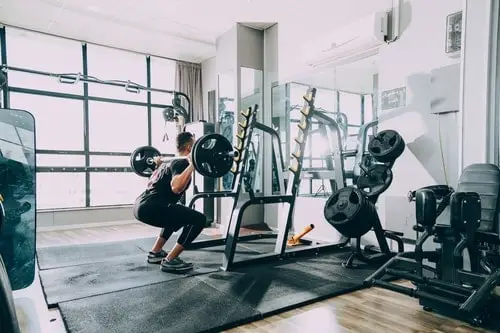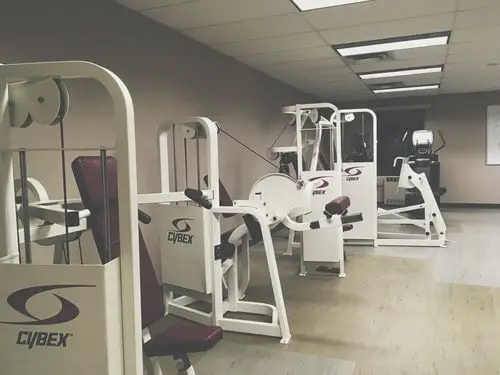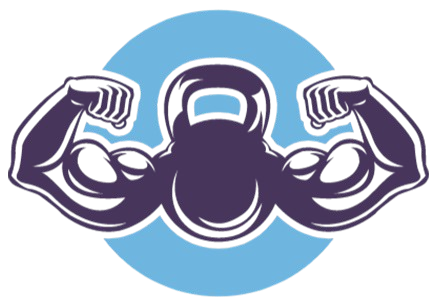Fitpro Income
Where Can Personal Trainers Train Their Clients (Best Options)
Not all trainers want to train their clients in a standard gym setup.
Some people just love the outdoors and the creativity that can come with training in different locations.
But where can personal trainers train thier clients, and can you train people anywhere you like?
There are important rules and regulations, as well as safety aspects that need to be considered when deciding where you take your clients for their sessions.
Don’t panic though, in this article I will listing some of the best places to train your clients and letting you know about any important rules you may need to know about before you begin.
Sound good?
Let’s go…

I’ve put together a list below of some of the most practical and enjoyable places to train your personal training clients.
I’ve added a list of the pros and cons of each location and any important factors such as safety concerns that you might need to know.
If you’d like to skip to any particular venue, just click on the link s below to jump straight to them.
The main locations that personal trainers can train their clients are:
- Gyms and health clubs
- Parks and open spaces
- Studios
- Church and town halls
- Clients homes
- Their own homes
- Their own private gym
- Corporate gyms
- Online
- Do personal trainers work out with their clients?
1. Gyms & Health clubs

Starting with the (possibly) obvious choice, a gym is the first and most common location pt’s and fitness instructors use to train their clients.
You can work as a self-employed trainer that pays monthly rent to the gym to use its facilities or as an employed trainer that’s paid a monthly salary based on the number of sessions you deliver.
Pros & Cons
Pros:
Client potential: The main benefit of working in a gym is that you have a huge number of members that you have the opportunity to convert into clients of your own.
Check out my article on just how easy it can be to sell your services in a gym environment by clicking the link below.
Selling Personal Training In A Gym: How To Guide
Equipment: There will also be a large variety of exercise equipment that you can use freely. This helps you retain clients by keeping exercise routines varied and interesting.
Insurance: Most gyms will have comprehensive insurance to cover accidents and even accidental death.
This will generally cover all the trainers working in the establishment too, but this is something to always double-check just in case.
Low fees (if employed): If you are brand new to training and want to get some experience with training people but don’t want the stress of paying rent, you can opt to become an employed personal trainer in a health club.
If you are an employed trainer in a large gym chain then you will not be asked to pay any rent at all, instead, a percentage of each session is deducted and taken by the gym as payment instead of rent.
Low start-up fees: After you have paid for your qualifications, if you are planning on working exclusively within gyms, you will have little else to pay for.
You can, of course, buy more equipment that you would like to use with your clients, but you will have the whole gym at your disposal.
Cons:
Competition: Whether freelance or employed, you will in large gym chains be in competition with up to 25 other personal trainers all looking for clients at the same time as yourself.
You will need to have a good level of self-confidence and develop your sales skills in order to make sure you can be more persuasive than the other trainers that your training is what they need.
Don’t get me wrong, the vast majority of the time there is good comradery between all the trainers in a gym, however, you do need to realize that they are your competition at the end of the day. If you don’t get someone to sign with you as a client, they might take them instead.
Rent: If you decide to go down the route of being a trainer that is self-employed but working within a gym, you are likely to be paying rent, and sometimes, this rent can be a seriously large amount.
In London, it is not unusual to be paying anywhere between £750-1000 per month in order to be able to train people and use the gym’s equipment.
The pressure this puts you under to sign up new clients and take payments is sometimes enough to put newer trainers off the business entirely, which probably accounts for the 80% turnover rate of new trainers each year.
Rules: When you own your own company and train clients independently, you only have your own rules to follow.
When hired by a gym or working in one as a freelance trainer, you must follow their rules.
They may make you wear a uniform at all times, attend trainer meetings, and you will be being told what to do by a personal training manager if you are working as an employed trainer.
To some people this is not an issue, however, the whole appeal of training people for a living for others is that you get to make your own rules and get to be in full control of your business.
Safety concerns
Very little!
Gyms are regularly checked for the safety of their equipment (no frayed cables, dangerously piled weights, etc) so they are generally very safe places to work in for you and your clients.
Of course, accidents can happen anywhere, and especially when using weights, but should an accident occur, there are always first aid kits available, and in order to be eligible to work in a gym, you will likely of had to go through a first air at work course.
Equipment needed
The only equipment that you would need when working in a gym is anything that you feel would be particularly useful for your own style of training that the gym doesn’t provide as standard.
This could include items such as bioelectrical impedance machines, battle ropes, stopwatches, etc. Everything else you could want is almost certainly already at your fingertips in the larger gym chains.
2. Parks & open spaces

The ultimate freedom for some personal trainers is working outdoors with clients.
The idea of working in a gym for certain trainers just doesn’t appeal for the reasons I will outline below. Training people in the fresh air helps them maintain high energy levels, feels more natural to them, and allows them to work at their best.
There are many benefits to conducting outdoor sessions, but there are also some serious considerations that need to be taken into account.
You can make some really great money whilst being a freelance or self-employed personal trainer.
Check out my article “How Much Can A Self-Employed Personal Trainer Earn?” to be completely amazed by the earning potential.
Pros & Cons
Pros:
Relaxing atmosphere: For some, the idea of working in a hot and sweaty (and sometimes smelly) gym isn’t something they would even consider.
Training outdoors allows you to get out in the open with fresh air and cool breezes without all the hustle and bustle of a busy gym at peak times.
It lets you and the client train in a calm environment where you don’t need to be shouting instructions over loud music and the grunting of other gym members.
Less intimidating for clients: Not all people feel comfortable training in a gym, especially if they have body confidence issues that makes them feel as if everyone else in the gym is in better shape than them and might be judging them by what they can or can’t do.
Sunlight: More a perk for the trainer rather than the client as such, but as many trainers who have worked in cities will tell you, most large gyms will be situated in the basements of large buildings to save on the cost to the gyms themselves.
This can lead to fitness instructors and PTs seeing only a few hours of sunlight each day and in the winter months even less than that.
Space: Big commercial gyms are highly successful, and they are successful because they can draw in hundreds of members per day and have thousands of people registered as paying customers.
This is great for the gym, and it can mean there are plenty of members to try to convert, but it also means the gyms can get incredibly busy at peak times.
This can interrupt the flow of your session if you have planned to use a particular piece of equipment, only to find that a person has just got on it and has five sets to complete.
As a trainer working in a gym, this is something you learn to work around, but when you train people outdoors using your own equipment, this will never be an issue for you.
Cons
The weather: In the UK, we aren’t always blessed with the best weather for outdoor training.
Now to some, training in the driving wind and rain will give a “Rocky’esque” feel to their training sessions, but a lot of others would really find it hard to get out of bed for a 6 am session if it’s raining and cold outside.
Lighting: During the summer this will not be an issue as you will have plenty of sunlight from early in the morning till late at night.
During the winter months when the nights start drawing in a lot earlier, it can really make training outdoors difficult.
There are a number of safety concerns with people training in the dark, from sprained ankles from tripping whilst running to swinging round kettlebells close to your body when you can’t see much.
It also takes some people a lot of motivation to get up early and train when it is dark outside as they would rather have an extra ten or twenty minutes in bed, this may make clients being late for sessions or canceling completely much more common.
Limited clients: As you don’t have the benefit of having hundreds of members walking through the gym each and every day, you will have to dedicate a lot more of your time to market your services to make sure you have a full training diary.
If your marketing skills are not up to scratch you could find yourself really struggling to find enough clients in your local area to make your business sustainable in the longer term.
Lack of client progression: In a gym environment, is it is easy to progress clients in their training by adding more weight to each exercise or using different pieces of kit or training methods.
When you own your own portable training business, you will be limited in what kit you can bring to each session and how heavy of a weight you can use.
This will mean that you will have to be far more creative with your training programs than you would in a commercial gym.
Safety concerns
Training outdoors comes with hazards that are not present when training in gyms or indoor venues.
As I stated, training in the dark can make it difficult to see if your client is performing the exercises correctly and safely.
A lot of the safety aspects that need to be addressed from outdoor training are weather-related. Snow, ice, and rain can all cause surfaces to become slippery which could cause sprained ankles and wrists from falling.
Other issues that need to be taken into consideration would be things like ensuring that all equipment is properly maintained by yourself and you are fully insured in case of any injury that could occur.
It is vitally important that when running your own business where you will be training people outside of a gym, you are completely covered by insurance.
The initial fees for this insurance may seem like a lot of money to stump up, but it will be well worth it in case an accident happens.
Equipment needed
You don’t necessarily need tons and tons of equipment to be training people outdoors. It is entirely up to you as to what you buy to train your clients, but remember that the less equipment you have, the more creative you will need to be with your clients’ workouts and the methods of progression you implement.
You will likely need the following items as a good start for a mobile training business:
- A set of adjustable dumbbells
- Exercise mats
- A small set of kettlebells
- Boxing pads and mitts
- Suspension training kit
This would be a good start which would cost you under £1000, and you could always purchase more equipment as and when you need it.
3. Studios

If you don’t like the hustle and bustle of big commercial gyms and would like something a little quieter but without the need for umbrellas and serious amounts of suntan lotion, working in a studio can be a great choice.
You can either work as an employed PT in a studio where you would be paid a salary, or you can work as a freelance trainer and pay a monthly or weekly rent to the owners.
Pros & Cons
Pros
Peace and quiet: Studios have all the benefits of a larger gym by supplying all the equipment you would need, whilst letting you work with your clients in a much more calm and less stressful environment.
You will have a lot more space at your disposal and will not have to concern yourself over other trainers or members using the equipment you had planned to use in that sessions, as there will only be a few other trainers and clients in the studio at the same time as yourself.
Less competition: Studios either let you train your own clients from outside or train “walk in’s” that have requested a trainer to help them.
The benefit to you is that you will not be fighting for clients and competing with twenty or so other trainers all after the same members as clients for themselves.
Better for nervous clients: Some people feel very nervous in large gyms full of people, they could feel self-conscious of the way they look or the exercises they are performing and sometimes it could even be that they might feel silly for asking for help.
A studio provides the perfect environment for these clients to be able to train in a secluded environment where they can feel far more comfortable with their trainer and themselves.
You can charge higher prices: Because of the (usually) higher quality and more private atmosphere of a studio, you will be able to charge more for your training packages.
This means you can make the same (if not more) income from training fewer clients in a studio than you would in a gym or training people outdoors.
Cons
Expense: If you are acting as a freelance trainer in a studio, the monthly or weekly rent can be more expensive than that of a commercial gym.
As explained above, you will usually be able to charge more for each session, but this is still a point to consider when weighing up the pros and cons of each training option.
lack of members: Training studios don’t have any members.
They do not allow people off the street to come in and use the equipment themselves without a trainer being present with them at all times.
This means you will need to bring clients with you from the outside (if you are working as a freelance trainer) or hope that the studio itself is marketing itself properly to ensure a steady supply of clients for you to train.
Additional work: Some studios may require trainers that use the facilities to help out with the maintenance of the equipment. You may need to help clean the equipment down and make sure everything is safe for use.
If you have progressed from a fitness instructor to a personal trainer, you may not like the idea of having to help out, but it’s something that must be done if you are only working with a few other trainers and need to maintain the quality of the building and training venue.
Safety concerns
There are very few safety concerns with working in a personal training studio, as once again, the trainers working within it will all have had first aid training and there will be first aids kits present at all times.
The studios are probably safer than commercial gyms, as they aren’t as noisy, so should anything unfortunate occur, other trainers and members of staff are likely to be able to assist quickly.
The equipment will be checked for its safety regularly and the studio will likely have its own insurance. You can of course get your own insurance too just to be sure.
Equipment needed
Next to no equipment will be needed when using a studio to train your clients.
One of the main perks of using a studio specifically designed for personal training is that it will be full of all the equipment you would need to give people great sessions.
You can (as always) buy and use your own equipment providing you have confirmation from the owners that it is ok, but in most cases, you will not need to.
4. Church & Town Halls

Churches and town halls are great spaces that allow large groups of people to be trained at once, or in private 1-2-1 sessions.
Many of these locations will advertise that space can be hired out when not in use, but it’s worthwhile asking halls or churches if you can use their space if they are not advertising it, as they may not be aware that you will be willing to pay rent for use of the space.
Pros & Cons
Pros
Large class sizes: Spaces as large as town halls are perfect for setting-up Bootcamp, Yoga, Pilates, or circuit training sessions.
You can make great money by only charging a small fee of £5-10 per session for entry to the class with no contracts or forms to fill in.
This will draw in a lot of people and it is not uncommon for these classes to have twenty to thirty participants at a time depending on the safety of doing so.
Great community atmosphere: Because town halls and churches will be in the middle of towns or cities, they usually act as a central hub where lots of people congregate. This makes marketing easy, and it’s also likely that people attending will talk to their neighbors and local friends that may then join your classes/sessions.
Cheap: The fees that you will be charged to hire a space such as this will vary, but they are usually very small.
Some will ask for monthly payments, whereas others can be paid for each time you use the space, which is great if there is any reason you cannot take a class one week as if you give enough notice, you will not need to pay any fees.
Cons
No equipment: When you are hiring a space, you are getting just that, a space and nothing more.
This means you will need to supply everything you would need for that class or for a 1-2-1 session.
If you are taking yoga classes, your costs would be low, as only mats would be needed, but for circuit training classes, a lot of equipment may need to be purchased by yourself.
No changing facilities: This isn’t necessarily a huge con, as people would often get changed before coming to the class, but some people would prefer to be able to come to the location and get changed there.
There can also be issues with heating halls, as in the winter months they can become quite cold which some clients may find too uncomfortable to train in.
Safety: I will get into the safety concerns of these spaces in more detail later, but there are very few if any safety checks conducted other than your own.
The building itself will, of course, be safe, but anything regarding your own training will be entirely down to you.
Safety concerns
Whoever you hire the space from is not accountable for what happens in your classes or sessions. This means the safety of anyone partaking in anything you do is down to yourself entirely.
There are some small concerns such as wooden floors being slippery etc, but the majority of safety factors would be down to your own training methods and equipment.
You will need to regularly check any equipment to ensure it is safe for use and that each client or class member is performing the exercises correctly so they avoid injury.
This is the same as with training people outdoors, but with more people attending classes, it can be more difficult to ensure each member is performing the exercises correctly and safely.
Equipment needed
You will need to provide all of your own equipment for these classes and 1-2-1 sessions, as very rarely will these locations have any of their own kit that you can borrow.
For some classes, this can be fairly cheap, but if you are looking to offer circuit training classes for example, or any other class that requires lots of equipment, you may have a larger start-up fee than if you had planned to only train one client at a time.
Typically kit would include, kettlebells, exercise mats, dumbbells, cones, speed ladders, sandbags, and so on.
5. Clients Homes

People always feel comfortable in their own homes, and many people would much prefer to hire a trainer to come to their house and train them where they feel most at ease.
There are aspects of this method of training people that need to be carefully considered before deciding if this is a route you would like to go down, but it can be very fun and really puts the “personal” into personal training.
Pros & Cons
Pros
Comfortable working space: A person’s home will generally be warm in the winter and cooler than a gym in the summer.
There are obviously no issues in regards to changing room or toilet facilities, and there is little need for a client to ever feel self-conscious training in their front room.
You can charge more: Offering to train people in their own homes is one of the most lucrative ways of offering pt sessions.
Because you can give a truly 1-2-1 service and in the most convenient way possible for a client, you can charge a lot more for your services than you could if you were only to be offering outdoor training or training in a standard gym.
Higher conversion rates: Many high earners do not have the time to travel to a gym for training sessions, so if you book someone in for a complimentary session, they are very likely to convert as a client.
Your sales techniques will still need to be sharp of course, but it will be a far warmer lead than a member picked up off the gym floor.
More location variety: Training people in parks and gyms can be a little monotonous if you are seeing the same walls or trees day in day out.
Going into different people’s homes can add a little variety to your day and the travel between clients can break up your day which limits any boredom that is common with training clients back to back in a gym.
More relaxed lifestyle: Because you can charge more per session, you will have the option to train fewer people each day.
This gives you plenty of time during the day to relax and get your own workouts completed and any other administration work completed without trying to cram it in before bed like you might have to when you need to train 8-10 clients per day in a commercial setting.
Cons
Lack of space: If you are lucky enough to have wealthy clients that live out in the suburbs they may have a large house with big enough rooms to facilitate a training session. They may even have a garden where you can exercise in the warmer months.
In the center of larger cities, these are luxuries that far fewer people have.
You may struggle to find the space you need to perform the exercises you had planned, which means you may have to be far more creative in what exercises you prescribe to make sure they are practical for the client’s home.
Limited use of equipment: Because of the space issue, there are lots of types of equipment that may be neither practical nor safe to use within a home.
Battle ropes may be a staple for most of your outdoor clients, but very few people are going to have homes where they can be used. Swinging kettlebells and performing HIIT routines around people’s prized possessions.
Insurance: Because you are training people in their homes and accidents can happen to not only your client but as previously mentioned their possessions, you will need to be heavily insured.
Of course, you would need insurance any time you work as a freelance trainer, but when training people in this environment, you would really want to make sure every eventuality is covered.
Safety concerns
The lack of space is the main safety issue I can see could be a reason for concern. It is more likely that someone will get injured if they are being asked to perform an exercise without the adequate space required, but of course, this is something you should take into account when organizing their session programs.
The floors could also be a slip or trip hazard that could lead to sprained ankles etc. Some carpets are more slippery than others, and if the only room in the house big enough to host a training session has inappropriate flooring and you continue with the routines, an injury could occur.
Equipment needed
Not too much.
As your exercise options will be limited due to smaller spaces to work within, you will not have to buy nearly as much equipment as you would for outdoor training or Bootcamp sessions.
This keeps your costs down as most people would only be looking for simple weight loss and shaping routines if they want to train in their homes, so you can stick to basic workout equipment.
6. Your home

You can’t get a much more convenient place to train clients than in your own home. You are completely in your own comfort zone and you can situate everything where you’d like it to be to have the least impact on your day-to-day living.
Pros & Cons
Pros
No travel: When people are coming to your home to train with you, all you need to do is sit at home and wait for them to arrive.
You have lowered fees as you don’t need to drive or take any busses meaning all that profit stays with you.
More time to yourself: The lack of travel means that you won’t have to kill time between sessions if there isn’t enough time to go back home and relax for an hour before the next session begins.
You can train more clients in a day: Should you wish to book all your clients into several hours back to back, this is easiest to organize when you train people in your home.
You know that you can time your sessions so that as soon as one person is leaving, you can have your next session arrive. You can make sure you have all your sessions finished by 12 pm if you wish and you can then relax for the rest of the day.
Better variety of equipment: You know what you can and can’t do in your own home, which means that you write up session programs for your clients, you can be certain they will be able to be completed in the space you have.
This helps you keep sessions fun for both your clients and yourself by being able to use a much larger array of equipment. The fact that you don’t have to pick and choose what you can carry in a bag means you can leave it in a room in your home and use it as and when you need to.
Cons
Strangers in your home: I think this would be the main concern for most people that are inviting people they had never met into their own homes.
All your possessions are in sight of people you have never met before, so you have to be careful to vet people before you agree for them to come into your property.
Inconvenience: It certainly is more convenient for clients to come to you than for you to go to them, however, in order for this to happen, you need to convert one of the rooms in your home to a make-shift gym.
If you have a significant other living with you they may become irritated by having people in the house exercising.
Cleanliness: Training multiple people in one room of your home each day can lead to it becoming dirty and requiring a lot of cleaning.
The largest room in most people’s houses are usually their living rooms, you can imagine the issues you might get when you have trained four people in your living room on a hot day and you sit down to watch some TV to relax at the end of the day.
You might need some air fresheners in there with you at all times.
Separation from work: One of the benefits of going to work each day is that it separates your workday from your relaxation time.
If you are sitting in your home all day every day training people, you are never really leaving your “office” as such, which makes it hard to get your head out of work mode and into relaxation mode.
When you are running your entire business from your living room, it is easy to find yourself always on your mobile or laptop working on your marketing, client retention, and writing up programs.
Far from being a more relaxed way of working, you can find yourself living a more stressed life where you never leave work.
Safety concerns
There shouldn’t be too many safety issues in terms of training people in your home as you have plenty of time to address these before you begin offering your services.
You would need to go through the usual procedures of making sure you are fully insured, and you may need to check with your provider what you are and aren’t covered for, as standard home insurance would not cover you running a business in your home.
You need to check through your equipment to make sure that it is safe to use and that the surfaces in the rooms you will be training people in are appropriate (not slippery), but this is easily done.
Equipment needed
You will, of course, need to provide the equipment for your clients to use in their sessions, but you have the massive advantage of being able to store as much as you want of it in a garage, shed spare room, or attic.
Depending on the size of your home or garden, you may be limited to what equipment you can use. This doesn’t mean that you have to have a boring set-up, as again you have plenty of time before you start advertising to decide how you can best make use of the space you have.
7. Your own private gym

Owning your own gym that you can use as a base for your business is the height of convenience whilst having far fewer of the drawbacks of inviting people into your home.
By having a well-equipped gym in a garage or specifically built structure, you can separate your business from your home life, have no fear of inviting people you don’t know into your home, and have the benefit of being able to provide the closest thing possible to working in a commercial gym, but without any of the distractions.
Pros & Cons
Pros
Equipment: When setting up your own gym, you have the benefit of kitting it out with all your favorite gear that you know will give your clients the best workout you can possibly provide, (finances permitting of course).
You will not need to carry around equipment from one session to another or take it out of the living room once your sessions are finished for the day.
You can prepare your gym for your next client and then see another immediately after, just like you would in a regular gym or health club setting.
No commuting: As all your sessions will take place in a garage or in your garden, you will not need to travel at all.
This cuts down on a lot of travel expenses and saves you a lot of time by not requiring you to move from one client to another.
This makes for an easier lifestyle and allows you to book out blocks of sessions back to back. By doing this you can make much better use of your time and you stand to make much more money by being able to see more clients in a day if you choose to.
A true 1-2-1 gym experience: It’s very rare to get a gym all to yourself in a commercial setting, even at the most obscure times of the day there will always be a few people lurking around.
By owning your own private gym, you can guarantee your client will have this experience in every session they have with you.
This brings comfort to people who are a little self-conscious in a busy gym and allows you to provide one of the best personal training experiences clients could wish for.
No waiting for equipment: Busy gyms are full of energy which is great for some people. What it also means is that you will have lots of other members and trainers who want to use the same kit as you at the same time.
This can ruin a great workout program full of exercises that you know will help your clients with their progression.
It also makes writing programs up much more simple, as you can be certain that every exercise you prescribe can be completed in the time allotted and that progression can be constantly gained.
Remember, If your client is making constant progression, they are far more likely to stay with you in the long term.
Cons
Heavy reliance on marketing: Just like when training people in your home or outside, you will have no walk-in clients or members in a gym to talk to.
You will need to be dedicating a lot of your time to making sure your marketing is as effective as it can be. You may even need to purchase marketing courses to make sure you can bring people to your business.
Start-up costs: It is a very big commitment to put aside a few thousand pounds to kit out a garage or even more to build an outside structure and then kit that out too.
Should your business not be as fruitful as you had hoped (which does happen), you could be putting a lot of money into something that might not take off the ground unless you are fully committed to it.
Cost of upkeep: Your gym will be being used by multiple people each and every day. This means equipment will be getting worn out quickly and will need replacing regularly, adding to your costs.
You can get equipment repaired, but at some point, you will need to completely replace it to keep your gym looking presentable and professional.
You must own your own property: If you are renting an apartment or even a house, it is very often the case that you cannot run a business from it without the landlords’ consent.
I have rented for a lot of my life, and I know that even asking if you can own a hamster is a pretty big decision for a landlord, so the likelihood of them saying yes to this is very unlikely.
Your landlord may have already had it written into your rental agreement that no businesses can be run out of the property, and the exception to these would usually be for people running an office-based business rather than a physical business such as training people.
It is my opinion that it would be very difficult to get your landlord’s permission to run a training business from a property you are renting from them.
Safety concerns
Just like with training people in your home, there are very few concerns over safety as long as you regularly check your equipment to make sure it is safe for use.
You would need to make weekly checks of the equipment you own so that you can be confident that one of your clients will not be injured during a session with you.
Because you will likely be using heavier weights in a personal gym than you would when training people outdoors or in your home, you will need to make sure you are fully covered by your insurance.
You can make sure that your surfaces are clean and safe, but accidents can always happen, so ensuring you have insurance to cover every eventuality is very important.
Equipment needed
The equipment you provide in your own gym is entirely up to you, so the costs could vary greatly from trainer to trainer.
Of course, you would need to buy all your own equipment, but you could purchase some of it secondhand in order to keep costs low.
Bear in mind though that people have certain expectations if they are training in a private home gym, so you would need to make sure this equipment is both safe and in good condition to met people’s standards.
The only limitations you would have when purchasing your equipment would be your budget and the space you have.
Should you be able to afford it, you could have a bench press, dumbbell sets, lat pull-down machines, squat racks, anything you want really.
This is not really necessary, but the closer you can get your gym to a commercial gym set up, the easier I feel it will be to provide an excellent variety of exercises for your clients.
8. Corporate gyms

Big companies in the city that have a large number of staff sometimes have their own in-house gyms, usually in the basement of the building.
These are built so that staff can use the gym before or after work, or during their lunch breaks.
They are usually kitted out to a high standard and maintained very well from my own experiences. Of course, the quality of the gym does depend on the size of the company.
Pros & Cons
Pros
High spec: If a company is big enough to be able to afford to have its own gym, there is a pretty good chance they are going to deck it out with some pretty high spec gear.
The corporate gyms that I have had the pleasure of working in were in Canary Wharf in London which is a very wealthy area, so they were some of the nicest gyms I have ever seen, fully decked out with bench presses, a large variety of machines, dumbbell and squat racks, pretty much everything you could want in a gym.
More private than commercial gyms: Nowhere near as private as owning your own gym (obviously), but still pretty private, as there will only be the companies employees using the gym and no one from outside will be able to enter.
There will be busy times of the day to train people (12-2 pm and 5-7 pm usually), but there will also be plenty of people who can take lunch breaks at less popular times that you can train.
A steady flow of clients: Companies that have a gym of their own will sometimes give discounts to personal training sessions for any of their employees.
You still get paid your set fee, but the employees are encouraged to use you by the employer paying for some of the fees you charge.
This works really well as an incentive to train, so you should find yourself with a steady supply of employees to train each day.
Insurance is covered: A lot of the freelance options we have discussed previously have required you to cover yourself up to the hilts with the insurance just in case.
Most corporate gyms will already be covered by their own insurance which should also cover yourself too.
I would always double-check this of course and it never hurts to cover yourself more if you are uncertain.
Cons
Limited clients: If you sign a contract saying that you will train the employees of the company that owns the gym, you are usually limited to training only these people.
It is very unusual to be allowed to bring in your own clients, so if you are struggling to convince people in the gym to train with you, you will have to put a lot of effort into your marketing and networking in order to start bringing in some sessions.
Clicky members: One problem you might encounter when working in such a small environment is that your entire client base will be talking together during their lunch breaks and coffee breaks.
This can be a great thing if your sessions are top-notch and people are making great progress with you, but it can equally be a very bad thing for business should something go wrong in a session.
Say for example you make a mistake during a session and someone gets hurt, they are likely to go upstairs and tell people what happened. If they blame you for the accident, news travels very quickly and you could find yourself struggling to find clients as a result of bad press from one client.
Lack of client diversity: One of the benefits of working with people from all walks of life like you do with every other option for training people is that you get to meet people from many different industries.
You can be training an IT consultant one hour, then a CEO of a digital marketing start-up the next. This gives you plenty of different things to discuss which is what keeps your sessions interesting.
If all your clients work in the same building for the same company in the same industry, you could find yourself getting a little bored with the conversation.
Safety concerns
As with working in a commercial gym, there should be little concern over safety in a corporate gym.
The equipment will often be checked for safety, and it may even be a part of your own job to ensure that cables are not frayed and weights are stacked correctly to prevent injury to anyone.
You will always need to make sure that what you prescribe to your clients is safe, but that’s more to do with your own business rather than the safety of the environment you are in as such.
The gym itself should generally be kept safe for both yourself and your clients to train in by the company that owns it.
Equipment needed
You should need to buy next to no equipment if you are working in a corporate gym. You may want to buy some of your own kit if you feel it helps with training your clients, but as I stated earlier, these gyms are often very well-equipped venues.
10. Online

Not typically a “venue” as such, but online training is a way that you can run a personal training business very successfully.
Setting yourself up is not particularly difficult, and it is becoming a very popular method of training very busy people that do not have the time to go to a gym or even invite you to their home.
Pros & Cons
Pros
Train anyone, at any time all over the world: With online training, there is no gym opening time to worry about, no peak times to avoid, and no need to worry about equipment being taken.
You are completely free to train people in different time zones and all over the world.
Automation: You can have all your exercise programs pre-written so when it comes to the end of a client’s program, you can send out their next routine, explain it to them and they are good to go.
You can create a huge bank of exercises so that you can create programs very quickly which makes writing these programs up incredibly simple and fast to complete.
There are even the options to have your client’s workouts sent automatically to them on a certain date so they can immediately move onto the next batch of exercises without you needing to do anything at all.
Low cost and start-up fees: As long as you are qualified and have an internet connection, you can be an online personal trainer or fitness instructor.
Your clients will be buying their own equipment, so all you will need to do is explain to them how to use it properly.
Your main fees will come from the software that you use and any advertising that you use to pick up new clients.
No early wake-ups or late night finishing times: Because a lot of your work will be replying to emails, messages, phone calls, and conducting a few online consultations, you will not need to be waking up at 5 am to travel to gyms or to clients homes.
You can wake up at a reasonable time and begin answering questions and working on your advertising whilst you eat your breakfast in the comfort of your own home.
Great income: You will have such low fees that you will be taking home a great deal of what you charge for each session (you still have to pay your tax of course).
You will be able to charge people £200-300 per month for training with yourself, so even with the monthly fees for subscriptions to software, etc to take into account each month, you will still be bringing in some noteworthy income.
Cons
Difficult to instruct properly: As you are only conducting your training sessions over email, phone, and video calls, it can be very difficult to make sure your clients are performing the exercises you prescribe with correct form.
They may be completing the workouts as instructed, but you have no way of checking the level of intensity they are performing the exercises at.
If clients are not performing the exercises with the intensity required, they are less likely to make the kind of progress you would expect.
And if clients don’t make progress after paying for sessions, it will be you they blame and not themselves.
Boredom: Whilst being able to write up programs and send emails all day in your pajamas may some like heaven to some, for others it would be incredibly boring.
Many personal trainers (myself included) enjoy training people face to face as you get to know your clients on an individual basis and can correct postural issues and exercise techniques as and when they happen.
There is a very real concern that some trainers may find they start to get bored if their entire client base is made up of online training only, which is why it may be better to take online sessions as an addition to face-to-face training sessions.
Always at work: As your clients will be able to contact you at all points in the day (especially if you are training people from all over the globe) you will never really be away from your work.
Working in a gym or as a freelance trainer allows you to separate your work from your home life. This is a very healthy thing to do otherwise you can find yourself getting stressed with your work situation and never being able to escape it.
Even if you have had a bad day at the gym for whatever reason, when you leave to go home, you have separated yourself from your work even if just for a few hours.
Competition: Ten to fifteen years ago you would have had very little competition from other trainers offering online sessions.
Unfortunately, those days are long gone and you will now find yourself up against a great deal (tens of thousands globally) of other trainers offering their services.
Many of these trainers have been online for many years now and have a very strong following. Showing people that you, as a new trainer, can offer services as good as theirs will be a very hard task.
Safety concerns
The safety concerns that come with online training are that you must explain in great detail how exercises are to be performed correctly, as you cannot be there to make sure the client is performing them safely as they do them.
You should explain to your clients that they will need to make sure they are training in a safe environment (no slippery floors etc) and that they regularly check the equipment they are using to make sure there are no signs of wear and tear that could cause injury.
Equipment needed
Very little of your own equipment is needed to start an online training business. You will only need a decent laptop or computer, a reliable internet connection, and some software to help keep track of your clients’ progression.
Your clients will be buying all their own equipment, which saves you a lot of money and increase your business’s profits.
Do personal trainers work out with their clients?

This one’s a little tricky.
In some cases, where a client has said they would like to have someone to work out with them as it helps to motivate them, as long as it is pre-approved by the client themselves, I would say that it is fine to train with them. After all, it is your client that is paying for the sessions, so as long as they are totally fine with you exercising with them, then there is nothing wrong with this in my view.
However, I personally have reservations about training with clients, the main one being that you are supposed to be the trainer, not the trainee. If you are working out at the same time as your client, your cannot be paying close attention to their form, you can’t give them assistance when you need to and you will not be able to spot any potential dangers whilst they are training.
You are being paid to teach and instruct, and this cannot be properly achieved when you are working out yourself.
If I were to take boxing lessons, I would want the coach on the side of the ring giving me directions and pointers whilst I was sparring with someone, I wouldn’t want them concentrating on their own techniques as they sparred with someone else. If I were paying for tuition, I would want their undivided attention at all times.
Conclusion
There we go, these are the most common places that personal trainers can train their clients.
I hope that explaining the pros and cons of each location will make it easier for you to decide which will be the best option for you as a trainer.
Several of these options can be combined together to increase income. For example, there is nothing to say that if you are working in a gym you can’t take on additional online sessions.
The thing to remember though is that you do not want to burn out and overdo the number of clients you are taking on in one go.
I hope you’ve found this article useful and you have a great day.
Go get ’em!
